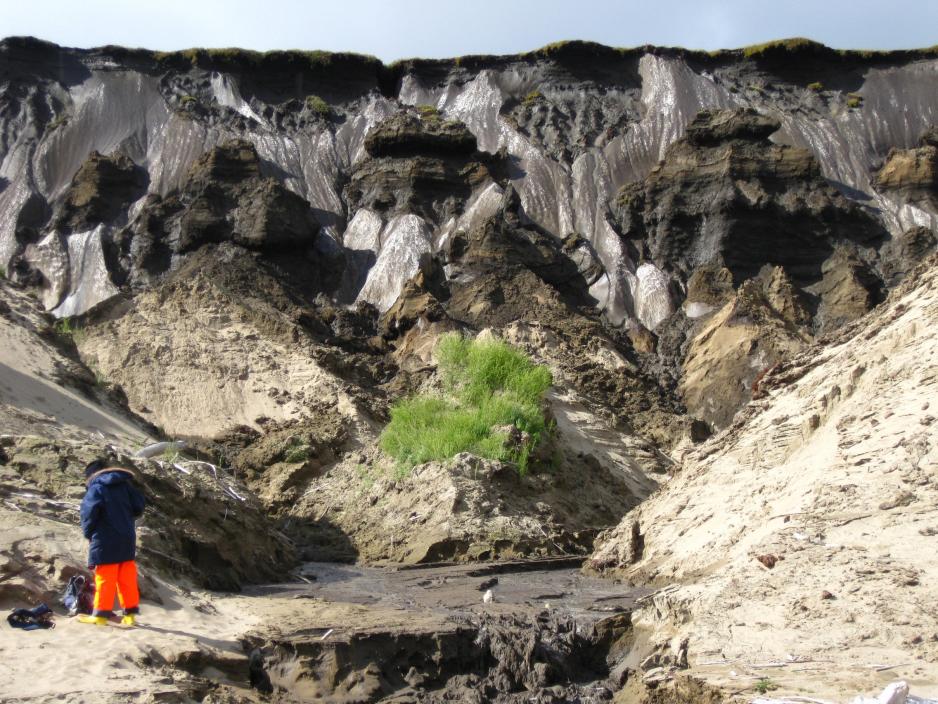Thawing permafrost releases more methane than expected

Here, soil samples were taken from the thawing permafrost on the shores of the Lena River, Siberia. (Photo: Inken Preuss)
Challenging current theories, a new study suggest that water-saturated permafrost soils produce substantial amounts of methane, which would have enormous effects on climate change.
Until now, previous studies underestimated the amount of methane produced from thawing permafrost. "Our theory is that more methane is produced than observed until now and that previous experiments didn’t last long enough," says Christian Knoblauch of the Universität Hamburg’s Institute of Soil Science to HNN. The results of the study were published in ‘Nature Climate Change’ in March.
Paradigm shift in methane and CO2 production
In the study Knoblauch presented at the annual meeting of the European Geophysical Union (EGU) in Vienna, Austria, long-time laboratory experiments were conducted for the first time using soils samples from Siberia. In some samples, methanogens, which are microorganisms that produce methane as a metabolic end-product under anoxic conditions, started to develop only after one to three years. Observing the microorganisms for another three years led to equal productions of CO2and methane in the soil samples.
Microorganisms essential for methane production
"The microorganisms are incorporated into the thawing permafrost at the bottom of the soils e.g. by leaching from the surface soil layer above the permafrost," Knoblauch elaborates. Through the periodic thawing, the microorganisms are mixed into the permafrost. Field experiments have shown how the collapsing of the active layer surface in summer moves the microorganisms into the former permafrost.However, "production does not equal release of methane and we need further modelling and additional field studies," Knoblauch explains.
More research needed on methane release
If the soil is not completely water-saturated, but instead contains higher levels of oxygen, it provides a good environment for microorganisms that live off methane. They consume the energy-rich gas and transform it into CO2, which eventually results in a weaker effect on climate change.
Strong impact of human activities
The soil samples were taken in the Lena Delta in eastern Siberia, which is a relatively pristine region, where the surface is not impacted so much by human activities. In future studies, Knoblauch and colleagues are planning to compare this to soil samples from western Siberia, where there is a lot of oil industry and reindeer herding. "Our plan is to integrate oil and gas companies and other stakeholders in the study", notes Knoblauch.These anthropogenic activities have an important impact: they change the surface of the environment and contribute to permafrost thawing. This affects the moisture regime of soils and might cause more methane to be released, thus further contributing to greenhouse gas emissions and climate change.
